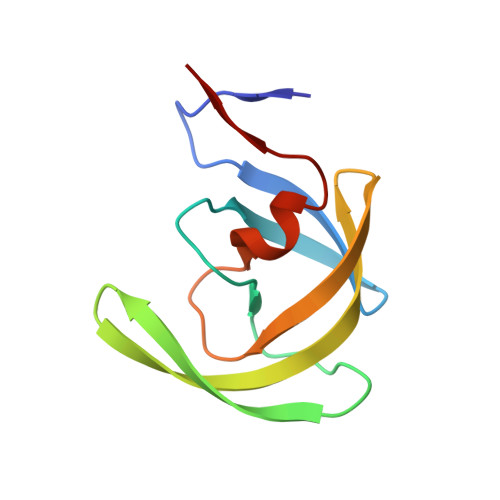Compensating enthalpic and entropic changes hinder binding affinity optimization.
Lafont, V., Armstrong, A.A., Ohtaka, H., Kiso, Y., Mario Amzel, L., Freire, E.(2007) Chem Biol Drug Des 69: 413-422
- PubMed: 17581235
- DOI: https://doi.org/10.1111/j.1747-0285.2007.00519.x
- Primary Citation of Related Structures:
2PK5, 2PK6 - PubMed Abstract:
A common strategy to improve the potency of drug candidates is to introduce chemical functionalities, like hydrogen bond donors or acceptors, at positions where they are able to establish strong interactions with the target. However, it is often observed that the added functionalities do not necessarily improve potency even if they form strong hydrogen bonds. Here, we explore the thermodynamic and structural basis for those observations. KNI-10033 is a potent experimental HIV-1 protease inhibitor with picomolar affinity against the wild-type enzyme (K(d) = 13 pm). The potency of the inhibitor is the result of favorable enthalpic (DeltaH = -8.2 kcal/mol) and entropic (-TDeltaS = -6.7 kcal/mol) interactions. The replacement of the thioether group in KNI-10033 by a sulfonyl group (KNI-10075) results in a strong hydrogen bond with the amide of Asp 30B of the HIV-1 protease. This additional hydrogen bond improves the binding enthalpy by 3.9 kcal/mol; however, the enthalpy gain is completely compensated by an entropy loss, resulting in no affinity change. Crystallographic and thermodynamic analysis of the inhibitor/protease complexes indicates that the entropy losses are due to a combination of conformational and solvation effects. These results provide a set of practical guidelines aimed at overcoming enthalpy/entropy compensation and improve binding potency.
Organizational Affiliation:
Department of Biology, Johns Hopkins University, Baltimore, MD 21218, USA.
















